Why Choose to Explore Chianti by Vespa?
Embarking on a Vespa journey through Chianti offers an experience that combines adventure, freedom, and the romance of the Tuscan countryside. The gentle hum of a Vespa engine, the scent of cypress trees, and the rolling hills create a sensory-rich adventure that’s impossible to forget. For those seeking a more personal connection with Tuscany, riding a Vespa provides an intimate perspective on the region’s landscapes and lifestyle.
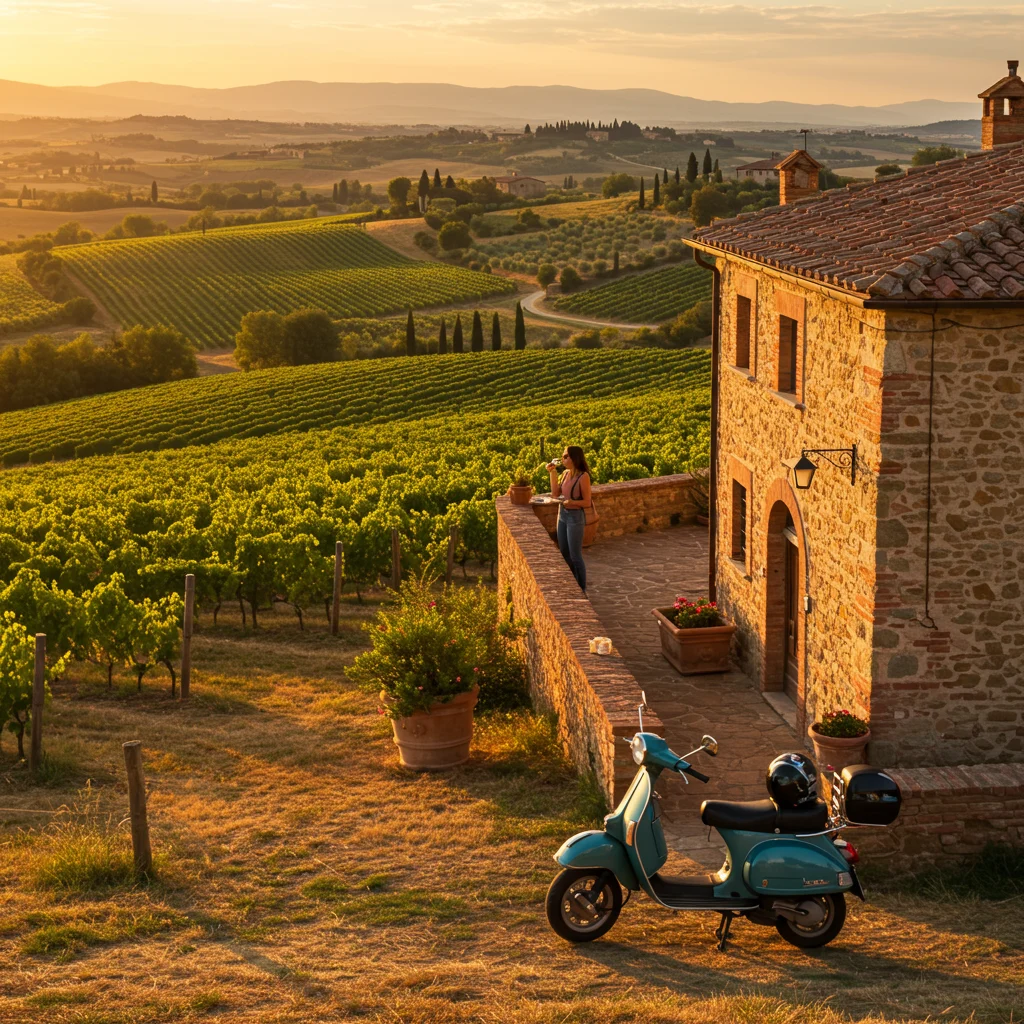
Unlike traditional tours, a Vespa ride allows us to move at our own pace, stop spontaneously, and access charming corners inaccessible to larger vehicles. This mode of exploration appeals to travelers eager to feel the wind on their face and savor every moment amidst the vineyards and olive groves of Chianti.
What Makes Chianti a Must-Visit in Tuscany?
Chianti is celebrated for its lush vineyards, medieval villages, and world-class wines. Nestled between Florence and Siena, this region epitomizes the quintessential Tuscan landscape with its undulating hills, stone farmhouses, and endless rows of grapevines.
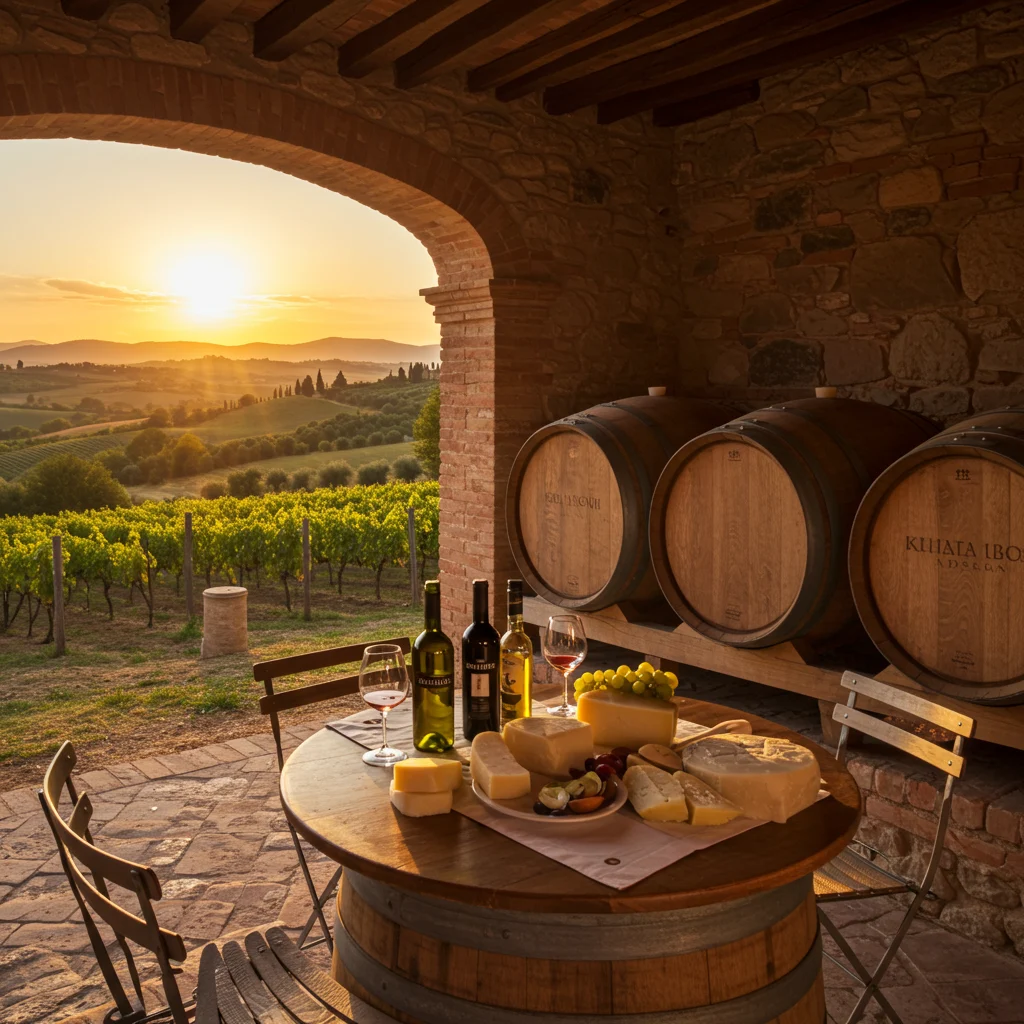
Beyond its visual appeal, Chianti offers a rich tapestry of history, from Etruscan roots to Renaissance grandeur. The area’s culinary traditions, renowned hospitality, and vibrant festivals make it a destination that appeals to all the senses. Whether you’re a wine enthusiast, a history buff, or simply in search of authentic Italian charm, Chianti’s allure is undeniable.
What Is the Unique Charm of Traveling Tuscany by Vespa?
Traveling by Vespa captures the spirit of Italian freedom and style. The Vespa’s agile design makes it ideal for winding country roads, offering panoramic views often missed from a car or bus. As we cruise along sun-dappled lanes, every curve reveals vineyards, wildflowers, and distant castles.
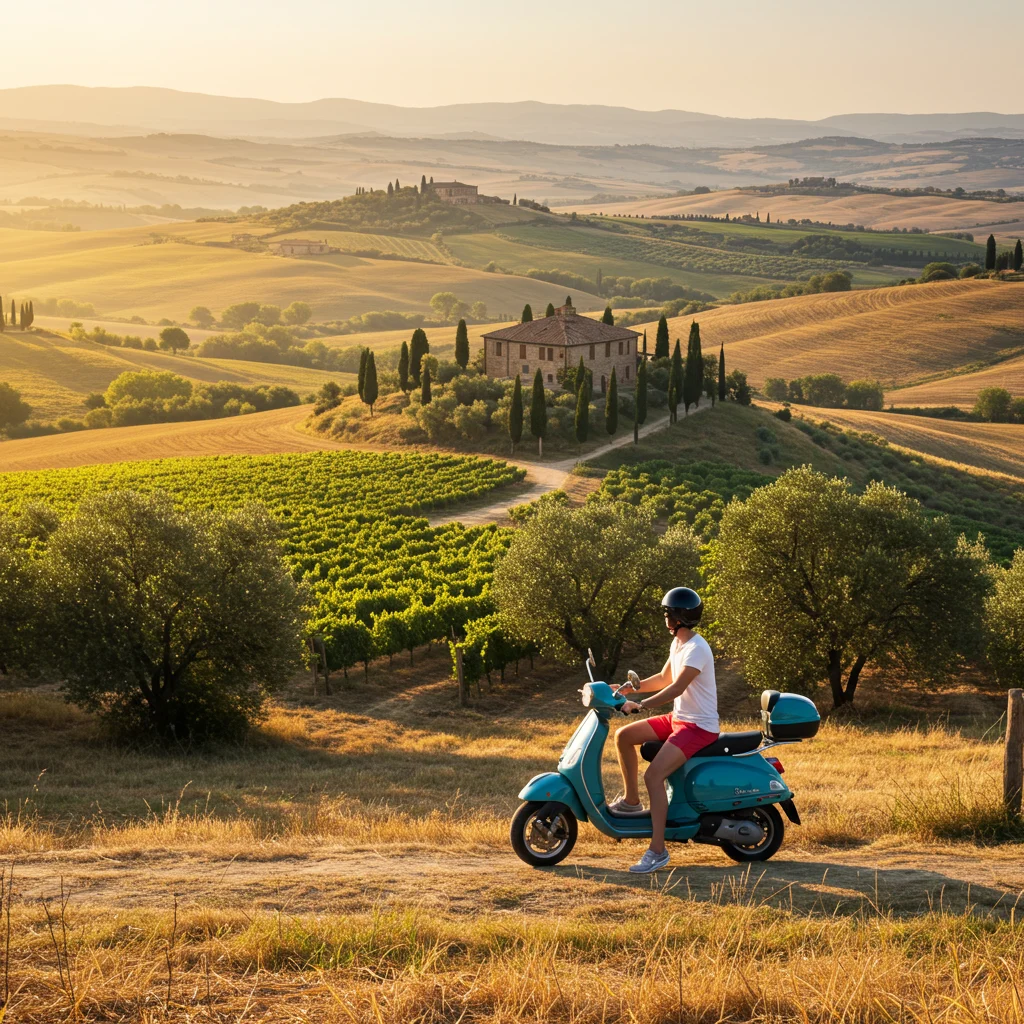
The gentle vibration under your hands, the sun warming your back, and the sound of birdsong combine to make this more than just a journey—it’s a celebration of the present moment. This immersive experience is why many travelers regard a Vespa tour as the highlight of their Tuscan adventure.
What Should You Expect from the Vespa Tour Experience?
Joining a Vespa tour in Chianti means more than just riding a scooter; it’s a curated experience designed to showcase the best of Tuscany. Most tours begin with a safety briefing and practice session, ensuring everyone feels confident before heading out. Experienced guides lead the way, sharing local insights and ensuring a smooth journey.
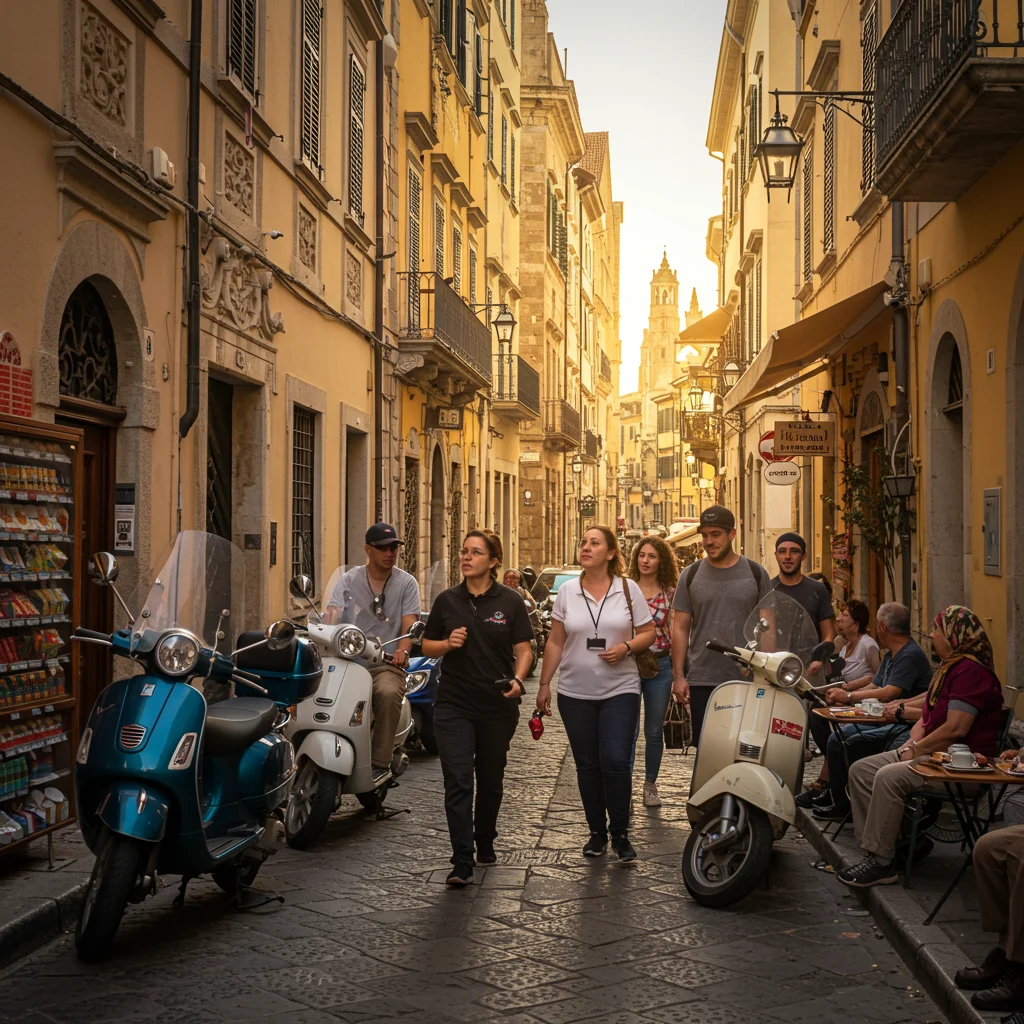
Along the route, we pause at picturesque villages, family-run wineries, and scenic overlooks. Many tours include a traditional Tuscan lunch and wine tasting, providing an authentic taste of the region. The pace is relaxed, encouraging spontaneous stops for photos or a gelato break along the way.
Who Is This Vespa Tour For?
This experience suits a wide range of travelers. Couples seeking romance, friends on an adventure, solo explorers, and even small groups can all find joy in a Vespa tour. It’s ideal for those who appreciate a blend of active travel, cultural immersion, and culinary delights.
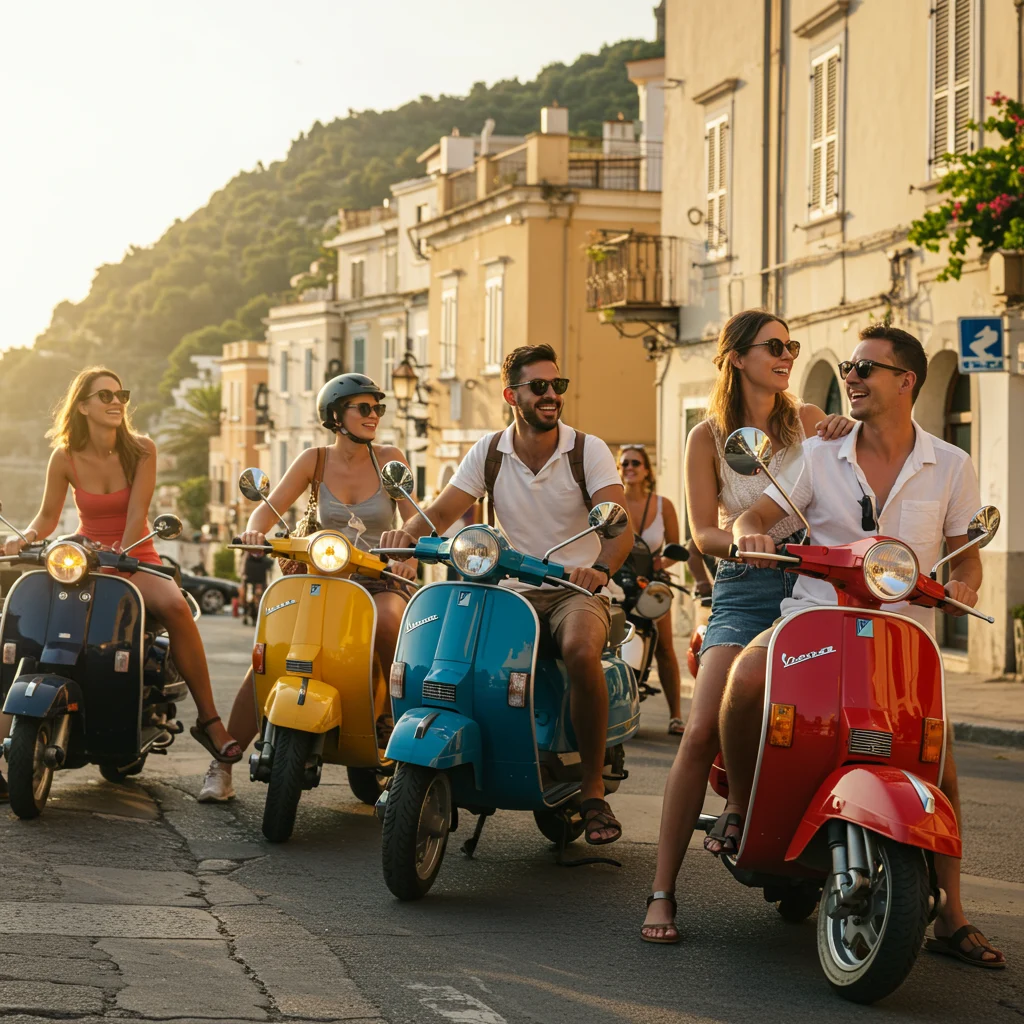
While some riding experience is helpful, many operators accommodate beginners. The key is a sense of curiosity and a willingness to try something new. Families and non-riders will also find options to join the fun, as we’ll discuss later.
How to Prepare for Your Chianti Vespa Adventure
Preparation ensures we make the most of our Vespa journey. From selecting the right scooter to packing essentials and understanding local rules, a little planning goes a long way toward a safe and memorable experience.
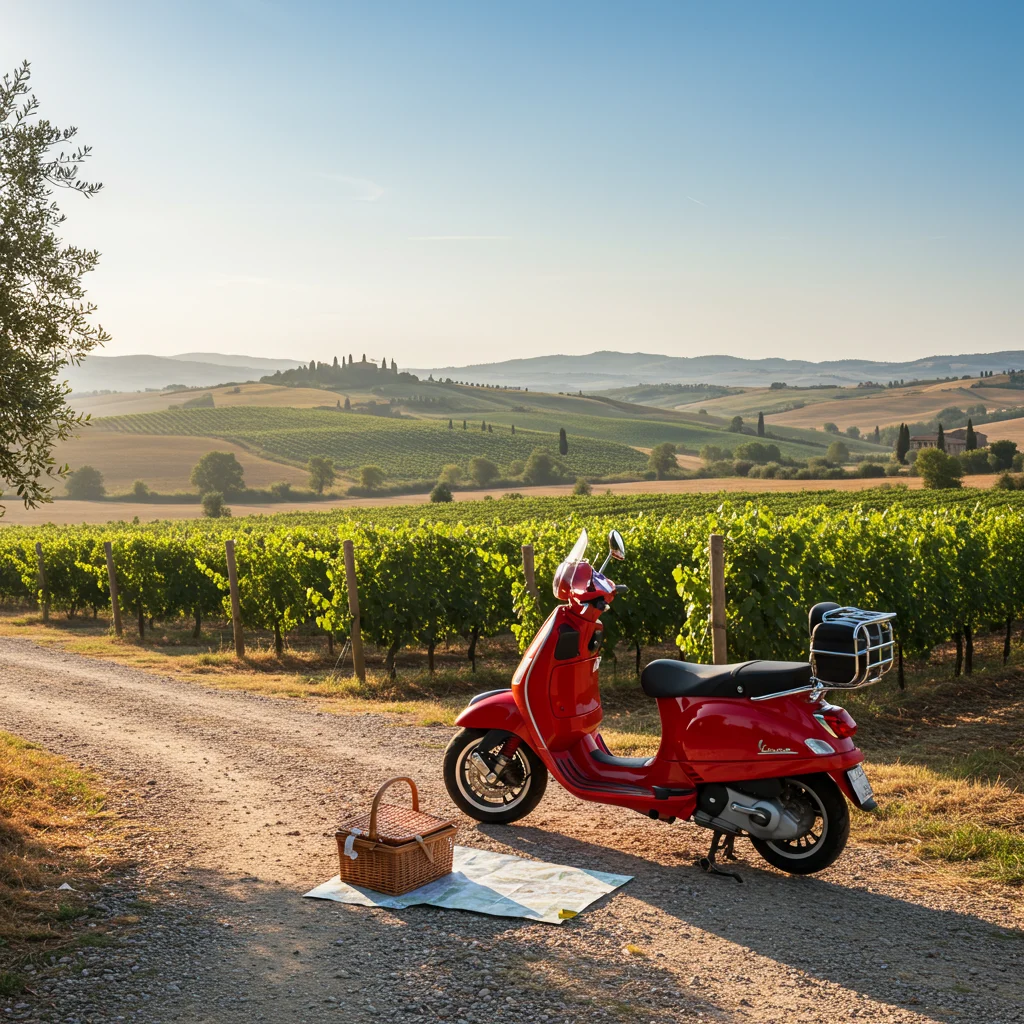
How Can You Choose the Right Vespa for Your Journey?
Most tour operators provide a range of Vespa models, including classic and modern versions. When selecting a Vespa, consider your comfort level, height, and riding experience. Automatic scooters are often easier for beginners, while manual versions may appeal to experienced riders.
If traveling with a partner, decide whether to ride solo or share a Vespa. Riding together can be romantic, but solo riding offers more control and freedom. Always consult with your tour provider for recommendations based on your preferences.
What Should You Pack for a Vespa Tour?
Packing light is essential. We recommend bringing:
- Comfortable clothing suitable for riding and changing weather
- Closed-toe shoes with good grip
- Sunscreen and sunglasses
- Camera or smartphone for capturing memories
- Small backpack for personal items and water
Some tours provide helmets and rain gear, but it’s wise to confirm in advance. Layered clothing helps adapt to temperature changes throughout the day.
What Are the Key Safety Tips for Riding a Vespa in Tuscany?
Safety is paramount when exploring Chianti by Vespa. Even experienced riders should pay attention to local road conditions and traffic habits. Always follow the guide’s instructions and use designated stopping points for breaks and photos.
How Should You Understand Italian Road Rules?
Italian traffic regulations may differ from those at home. Riders must stay on the right side of the road, obey speed limits, and give way at roundabouts. Be vigilant for local drivers and agricultural vehicles, especially on narrow country lanes.
Carry your driver’s license, and ensure it’s valid for scooters in Italy. International permits are often required for non-EU citizens.
What Essential Gear and Accessories Should You Bring?
Helmets are mandatory and provided by reputable tour operators. Sunglasses or goggles protect against dust and sun glare. Gloves offer additional grip, while lightweight jackets shield against wind and sunburn.
Consider bringing a neck buff or scarf for comfort and to filter dust. Reflective vests may be supplied for added visibility during early morning or dusk rides.
When Is the Best Time of Year to Explore Chianti by Vespa?
Timing your Vespa tour can make a significant difference in your experience. Each season in Chianti brings unique scenery, events, and weather patterns that influence riding comfort and photographic opportunities.
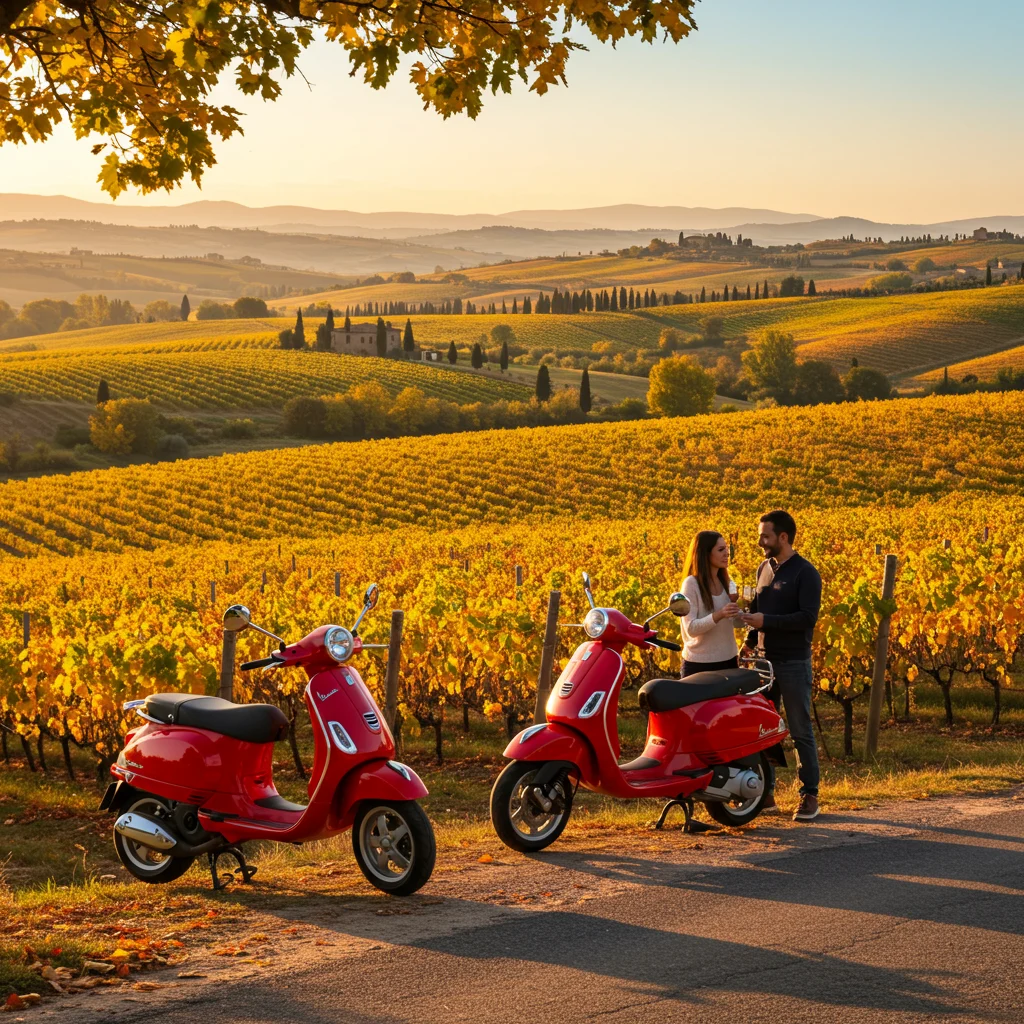
What Weather Factors Should Vespa Riders Consider?
Spring and autumn are often considered the most pleasant times for Vespa tours, with mild temperatures, clear skies, and blooming landscapes. Summer offers longer days but can be hot, especially in midday. Winter rides are less common due to rain and cooler temperatures, though they provide a quieter, more introspective journey.
Always check the weather forecast before setting out and dress accordingly. Early mornings and late afternoons often offer the best light and most comfortable conditions for riding.
What Seasonal Events and Festivals Take Place in Chianti?
Chianti hosts a vibrant calendar of events, from the Chianti Classico Wine Festival in Greve to autumn harvest celebrations. These festivals provide a unique window into local traditions, music, and gastronomy.
Touring during festival periods allows us to sample regional specialties, witness historical parades, and mingle with residents. Plan ahead, as accommodations and tours may book quickly during peak event times.
How Should You Book Your Chianti Vespa Tour?
Securing the right Vespa tour involves research and attention to detail. With many operators offering a variety of experiences, it’s important to compare options and select one that matches our interests and comfort level.
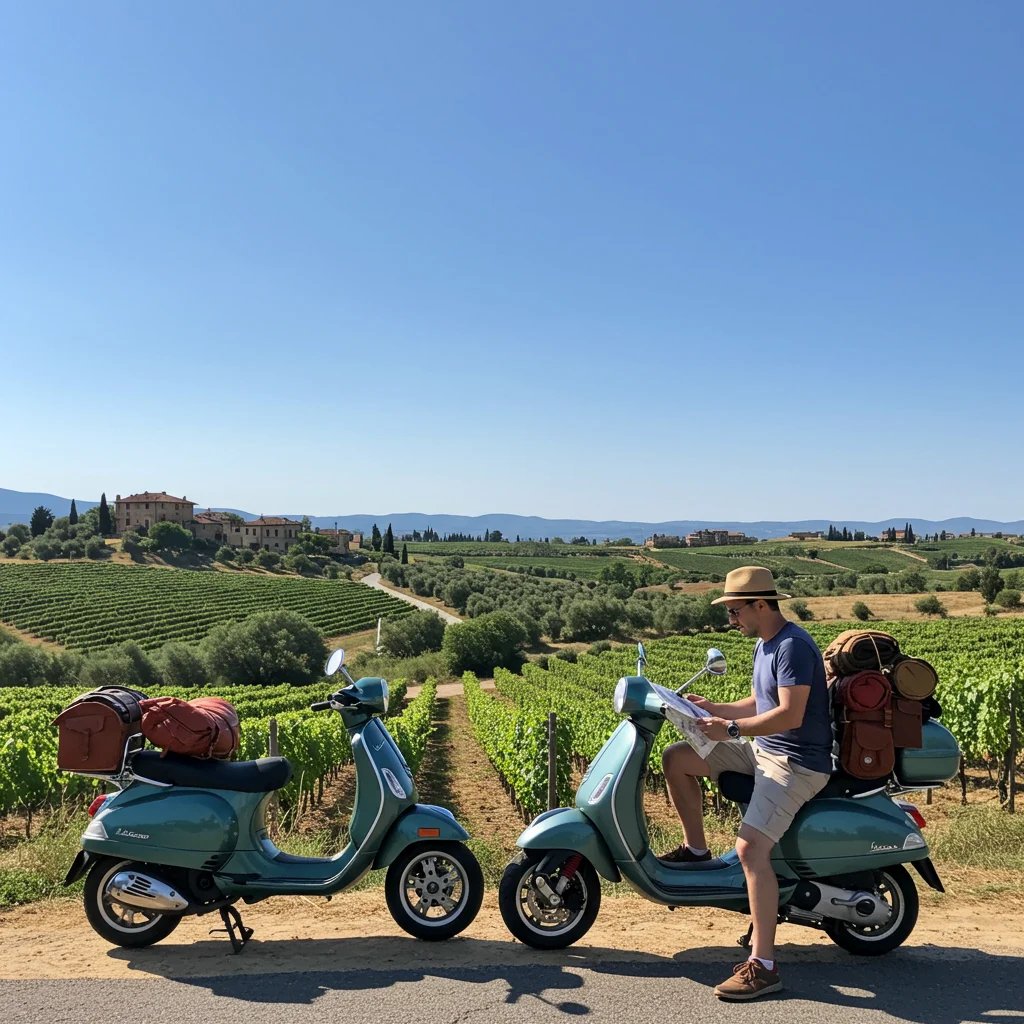
How Can You Choose the Best Chianti Vespa Tour Operator?
Reputation, safety standards, and local expertise should guide our choice of tour operator. Look for companies with positive traveler reviews, certified guides, and well-maintained Vespas. Transparent pricing and comprehensive insurance are also essential.
Some operators specialize in small-group experiences, while others offer private tours. Consider whether you prefer a social atmosphere or a more personalized journey.
Should You Choose a Guided or Self-Guided Vespa Tour?
Guided tours provide the benefit of local knowledge, logistical support, and curated stops. Guides often share stories and insights that enrich our understanding of the region. Self-guided tours appeal to independent travelers who prefer setting their own pace and itinerary.
Each option has its merits, but for those new to the area or to riding Vespas, a guided tour is often the best choice for safety and enjoyment.
What’s Included in a Typical Vespa Tour Package?
Most packages include:
- Vespa rental and fuel
- Helmet and safety gear
- Expert guide (for guided tours)
- Lunch at a local restaurant or winery
- Wine tasting experiences
- Insurance and roadside assistance
Always confirm inclusions and exclusions before booking to avoid surprises on the day of your adventure.
What Does a Sample Day Exploring Chianti by Vespa Look Like?
A typical Vespa day tour unfolds at a relaxed, enjoyable pace, blending scenic riding, cultural discoveries, and delicious food. Below, we outline how such an adventure often progresses.
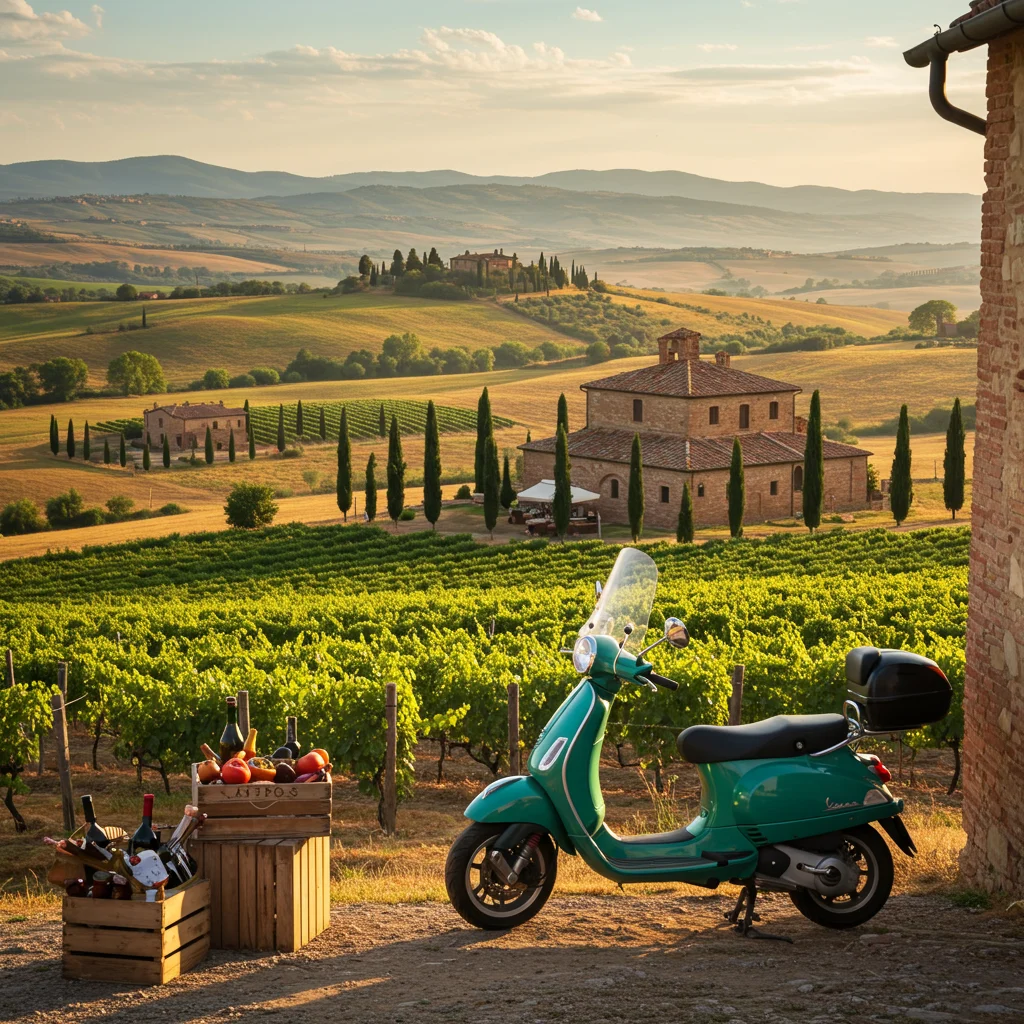
How Does the Morning Begin: Meeting Your Guide and Getting Oriented?
The day usually starts with a warm welcome at the tour meeting point. Guides introduce themselves, share an overview of the day, and check documentation. Riders are fitted with helmets and given a brief orientation to their Vespas.
What Happens During the Vespa Safety Briefing and Practice Session?
Before hitting the road, participants receive a hands-on safety briefing. Guides demonstrate essential riding techniques, explain local traffic rules, and supervise a practice session in a safe area. This builds confidence, especially for first-time riders.
What Are the First Scenic Stops After Setting Off?
The tour begins with a leisurely ride through the countryside, stopping at panoramic viewpoints and historic landmarks. Early stops often include small villages, artisan shops, or a local café for an espresso break. The fresh air, golden sunlight, and gentle rumble of Vespas set the tone for an unforgettable journey.
Which Villages Should You Not Miss Along the Vespa Route?
The Chianti region is dotted with enchanting villages, each offering its own character and attractions. Here are some highlights you’re likely to encounter:

What Makes Greve in Chianti the Heart of the Region?
Greve in Chianti serves as the unofficial capital of the area. Its triangular piazza, lined with arcades and artisan shops, invites visitors to linger over local cheeses, cured meats, and crafts. The village buzzes with life, especially on market days.
Nearby, the Wine Museum provides an excellent introduction to the region’s history and grape varietals. For those interested in culinary experiences, our post on the Florence cooking class offers insight into Tuscan cuisine you can bring home.
Why Is Castellina in Chianti Known for Medieval Magic?
Castellina in Chianti enchants visitors with its ancient stone walls, underground tunnels, and panoramic fortress. Walking along the Via delle Volte, we’re transported to a bygone era, surrounded by the scent of stone and history.
Local enotecas (wine bars) offer tastings of Chianti Classico, while family-run trattorias serve hearty regional fare. The village’s relaxed pace makes it perfect for a midday wander and a glass of wine.
How Does Radda in Chianti Offer Authentic Tuscan Vibes?
Radda in Chianti is perched on a hilltop, offering sweeping views of vineyards and olive groves. Its medieval streets, flower-filled squares, and welcoming locals create an atmosphere of genuine Tuscan hospitality.
Stop by the Palazzo del Podestà to admire centuries-old coats of arms, then sample local wines at a nearby cantina. Radda’s charm lies in its simplicity and its connection to the rhythms of rural life.
What Other Hidden Gems Can Vespa Riders Find?
Beyond the main villages, Chianti is peppered with lesser-known hamlets and scenic detours. Places like Montefioralle and Panzano offer quiet streets, stunning views, and a sense of discovery that rewards the curious traveler.
For those interested in unique wine experiences, consider reading about the off-road wine safari for another perspective on Tuscany’s rich viticultural landscape.
Which Scenic Routes Are Best for Vespa Riders in Chianti?
Chianti’s road network is a delight for two-wheeled explorers. Gentle curves, well-maintained surfaces, and minimal traffic make for enjoyable riding. Some routes are famous for their beauty and historical significance.
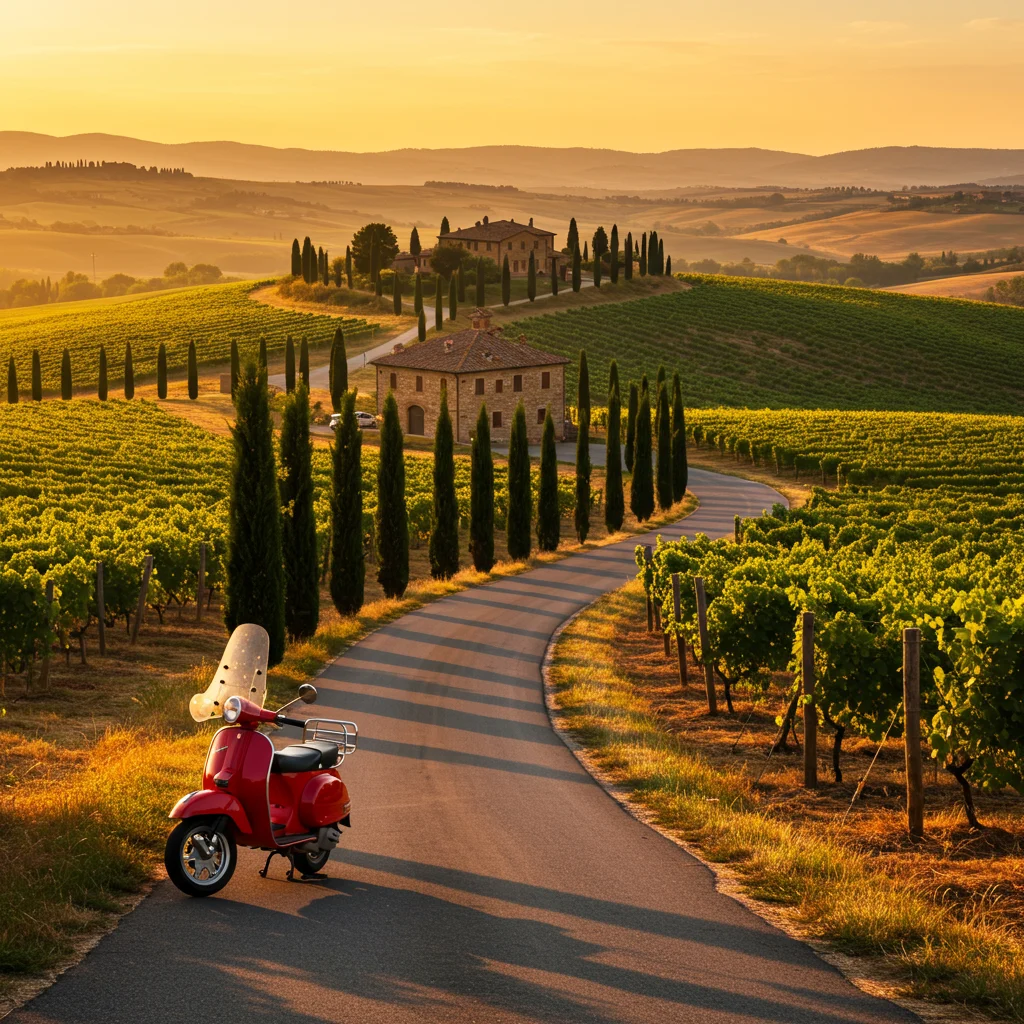
Is the Chiantigiana (SR222) Truly Tuscany’s Most Beautiful Road?
The Chiantigiana (SR222) is often regarded as the quintessential Tuscan road. Stretching from Florence to Siena, it winds through vineyards, forests, and hilltop villages. Along the way, every bend reveals postcard-worthy vistas and opportunities for spontaneous stops.
This route is ideal for photographers and those eager to soak up the region’s natural splendor. Riding the Chiantigiana by Vespa is a sensory feast—fragrant air, sun-warmed asphalt, and the distant chatter of birds and farm life.
What Are the Best Off-the-Beaten-Path Roads to Explore?
For those craving solitude and adventure, smaller country lanes lead to secluded farms, ancient churches, and peaceful valleys. These roads offer glimpses of daily life in rural Tuscany and often connect to lesser-known villages and viewpoints.
It’s wise to consult your guide or tour operator before venturing off the main routes, as some paths may be unpaved or challenging for inexperienced riders.
What Should You Expect from Your Expert Guide?
An experienced local guide elevates the Vespa tour beyond simple sightseeing. Guides share not only directions but also stories, history, and practical tips that enrich every moment of the journey.
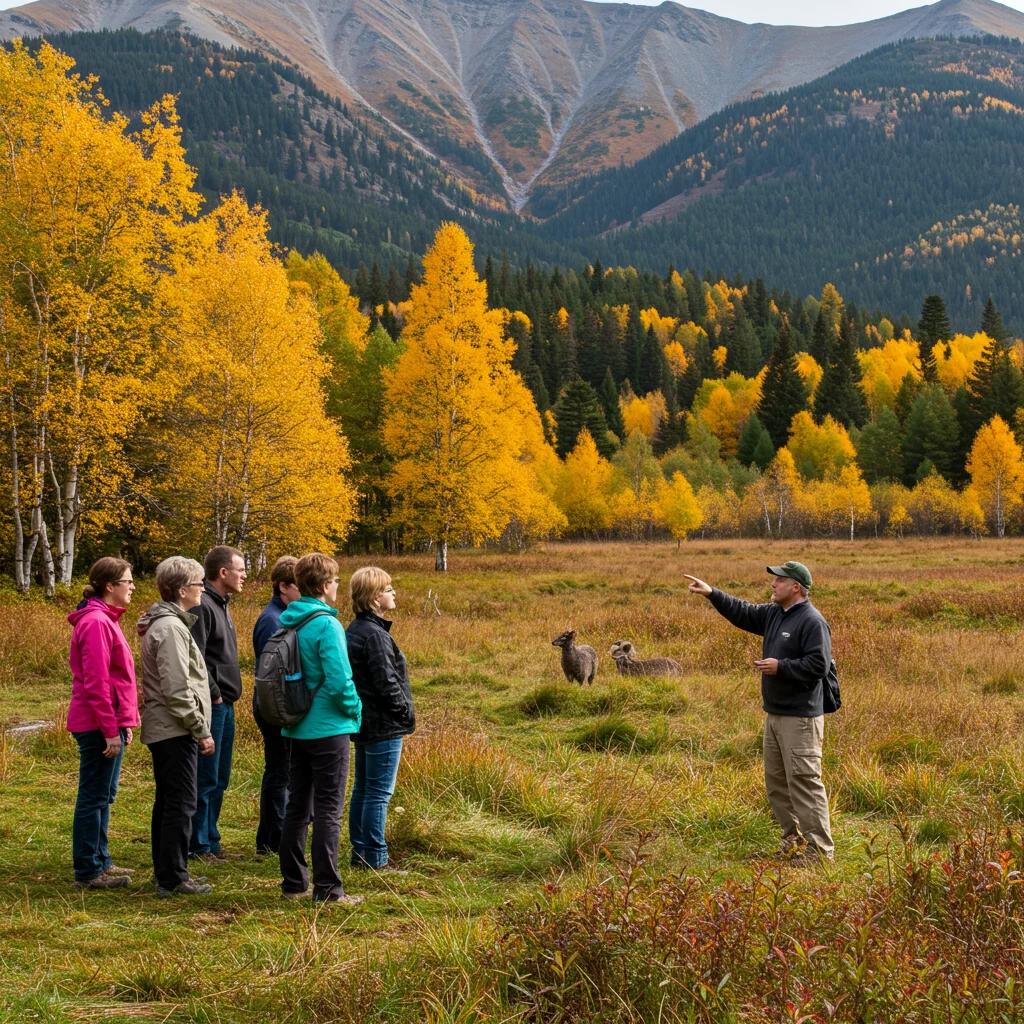
How Does a Local Guide Enhance Your Experience?
Guides bring the landscape to life with anecdotes about the land, people, and traditions. Their familiarity with the area allows us to avoid crowds, discover hidden gems, and enjoy authentic encounters with locals.
As experts often say:
“Travel is more than seeing sights; it’s a change that goes on, deep and permanent, in the ideas of living.” – Miriam Beard
The right guide can transform a pleasant ride into a profound cultural experience, connecting us to the spirit of Chianti.
What Stories, History, and Local Legends Will You Hear on Tour?
Throughout the day, guides weave tales of medieval rivalries, winemaking traditions, and the legacy of noble families. Stories about ancient castles, mysterious ruins, and local characters add color and context to the scenery we pass.
This storytelling creates a sense of belonging and curiosity, making each stop along the route more meaningful.
What Cultural Insights and Language Tips Are Shared?
Guides often teach us useful Italian phrases, explain local customs, and offer etiquette tips for interacting with residents. These insights help us engage respectfully with the community and deepen our appreciation for Tuscan culture.
Learning a few words of Italian or understanding the rhythm of a village market can turn a simple encounter into a lasting memory.
Why Is Lunch in Chianti a Culinary Highlight?
Lunch is more than just a pause in the day—it’s a celebration of Tuscan flavors and hospitality. Most Vespa tours include a meal at a traditional trattoria or winery, where we savor local specialties in a convivial setting.
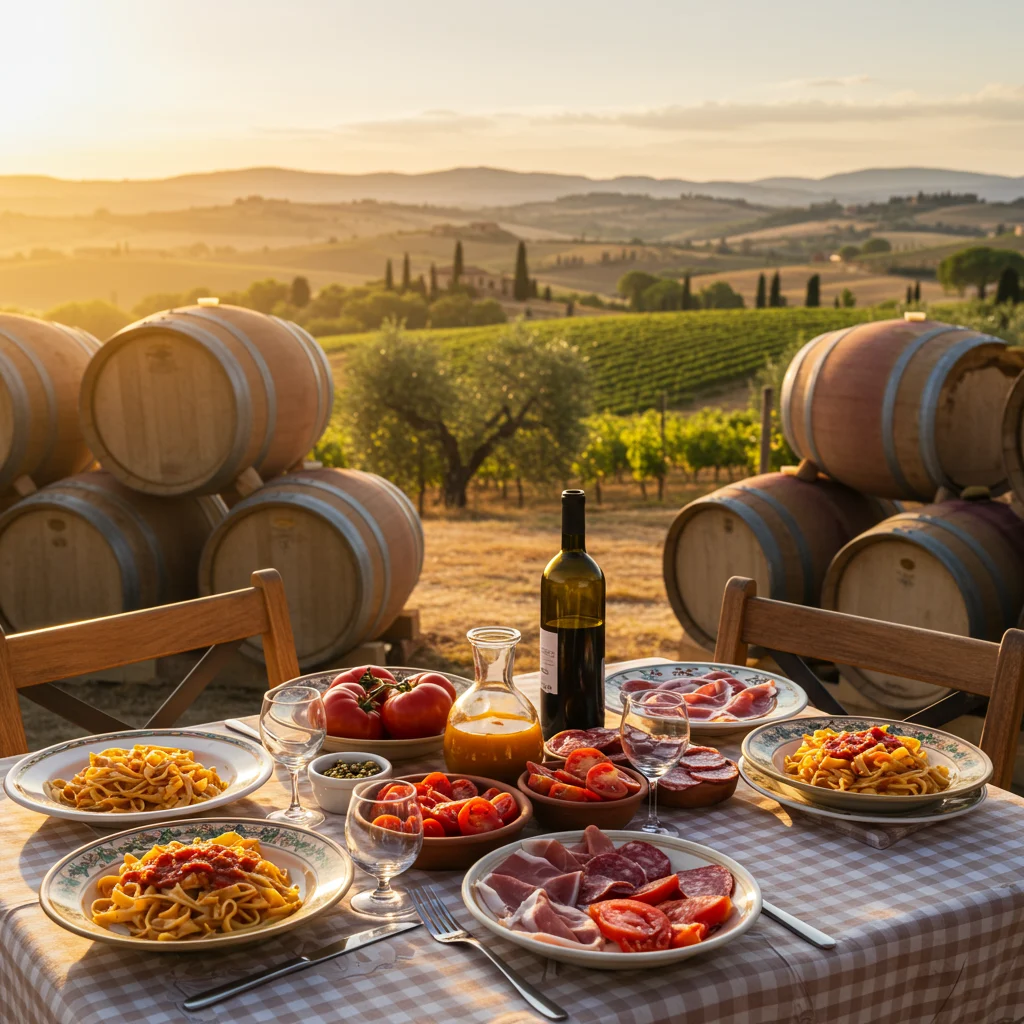
Where Will You Dine on Your Vespa Tour?
Meals are typically hosted in family-run establishments or agriturismi, surrounded by vineyards and olive groves. The ambiance is rustic and welcoming, with tables set under pergolas or in cozy dining rooms filled with the aroma of fresh herbs and wood-fired bread.
Some tours even arrange al fresco picnics, allowing us to dine amid the landscape we’ve been exploring all morning.
Which Typical Tuscan Dishes Should You Try?
Chianti’s culinary repertoire is both hearty and refined. Dishes often featured at lunch include:
- Pappardelle al cinghiale (wide pasta with wild boar sauce)
- Ribollita (Tuscan bread and vegetable soup)
- Tagliere di salumi e formaggi (platter of cured meats and cheeses)
- Bistecca alla Fiorentina (Florentine T-bone steak, by advance request)
- Fresh produce, olive oil, and house-made desserts
Meals are paired with local wines, enhancing the flavors and encouraging lively conversation. For more hands-on culinary experiences, our post about cooking for a cause in Florence offers an inspiring option.
What Makes Chianti’s Food Scene Stand Out?
Chianti’s cuisine reflects the region’s agricultural heritage and respect for seasonal ingredients. Recipes are passed down through generations, emphasizing simplicity and quality. The use of local olive oil, fresh herbs, and artisanal products creates meals that are both comforting and memorable.
Dining in Chianti is not just about the food—it’s a communal ritual that celebrates connection, tradition, and the joy of sharing.
Why Is Wine Tasting Essential on a Vespa Tour?
No trip to Chianti is complete without sampling its world-famous wines. Vespa tours often include visits to local wineries, where we learn about production methods, terroir, and the legacy of the Chianti Classico label.
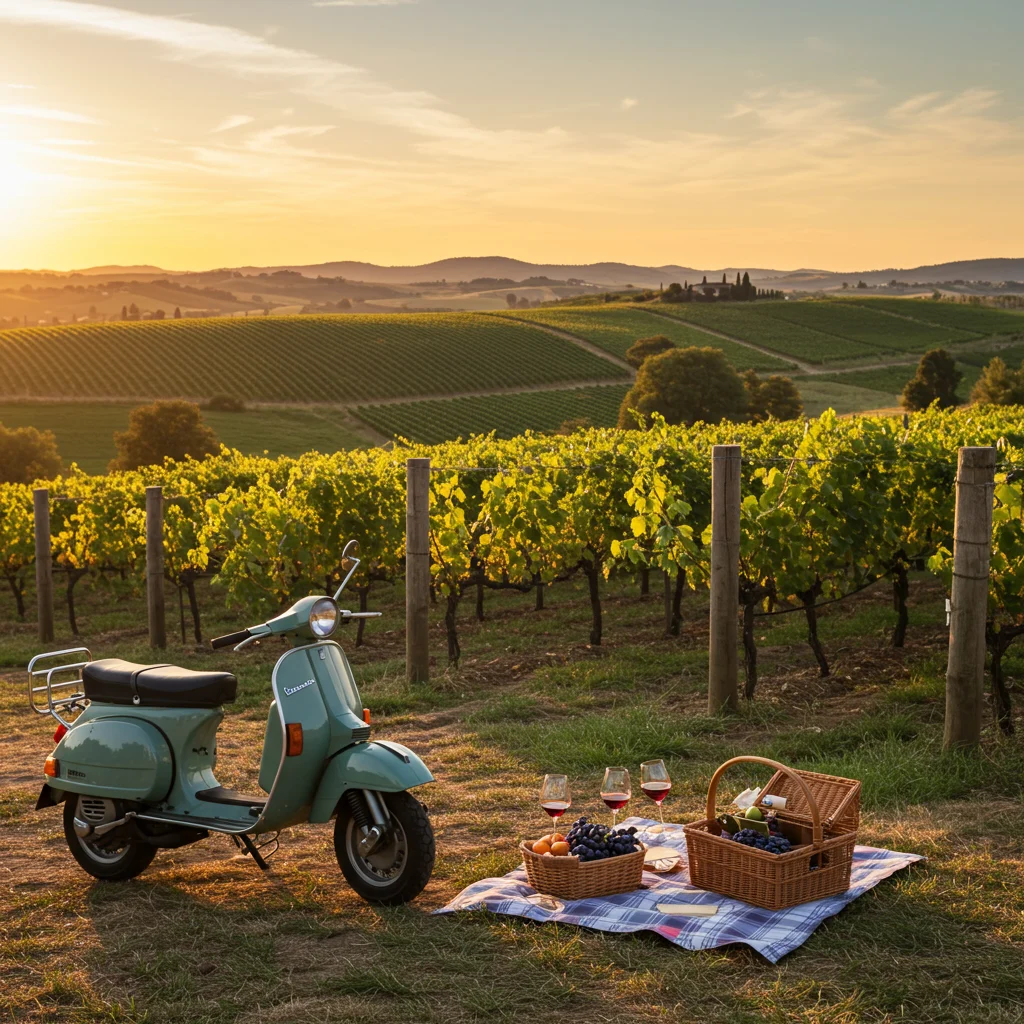
What’s Involved in Visiting Local Wineries and Vineyards?
Wineries in Chianti range from historic estates to boutique producers. Visits typically include a guided tour of the cellars and vineyards, followed by a tasting of several vintages. We meet passionate winemakers who share their craft and philosophy.
Surroundings are picturesque, with rows of vines stretching toward sunlit hills and the scent of fermenting grapes in the air. For those interested in combining wine with adventure, our Rome to Tuscany countryside tour offers another way to savor the region’s flavors.
How Can You Taste and Appreciate Chianti Wines?
Guides and sommeliers introduce us to the nuances of Sangiovese grapes and the characteristics that define Chianti wines. Tasting sessions often include tips on identifying aromas, flavors, and the influence of aging in oak barrels.
We learn to savor each sip, noting the interplay of fruit, earth, and tannins that make Chianti wines unique.
What Are the Key Wine Etiquette and Tasting Tips?
When participating in a tasting, remember to:
- Hold the glass by the stem to avoid warming the wine
- Observe the color and clarity against the light
- Swirl gently to release aromas before smelling
- Taste slowly, allowing flavors to unfold
- Ask questions—winemakers love to share their knowledge
Spitting is acceptable if you wish to sample multiple wines without overindulging.
How Can You Bring Home Your Favorite Wines?
Most wineries offer shipping options, making it easy to send bottles home or to friends. Check customs regulations for your country before purchasing large quantities. Many producers also sell olive oil, honey, and other artisanal products as souvenirs.
How Can You Capture Your Vespa Adventure in Photographs?
Photography is an integral part of a Vespa tour, preserving memories and sharing the journey with others. The ever-changing light, dramatic landscapes, and colorful villages provide endless inspiration.
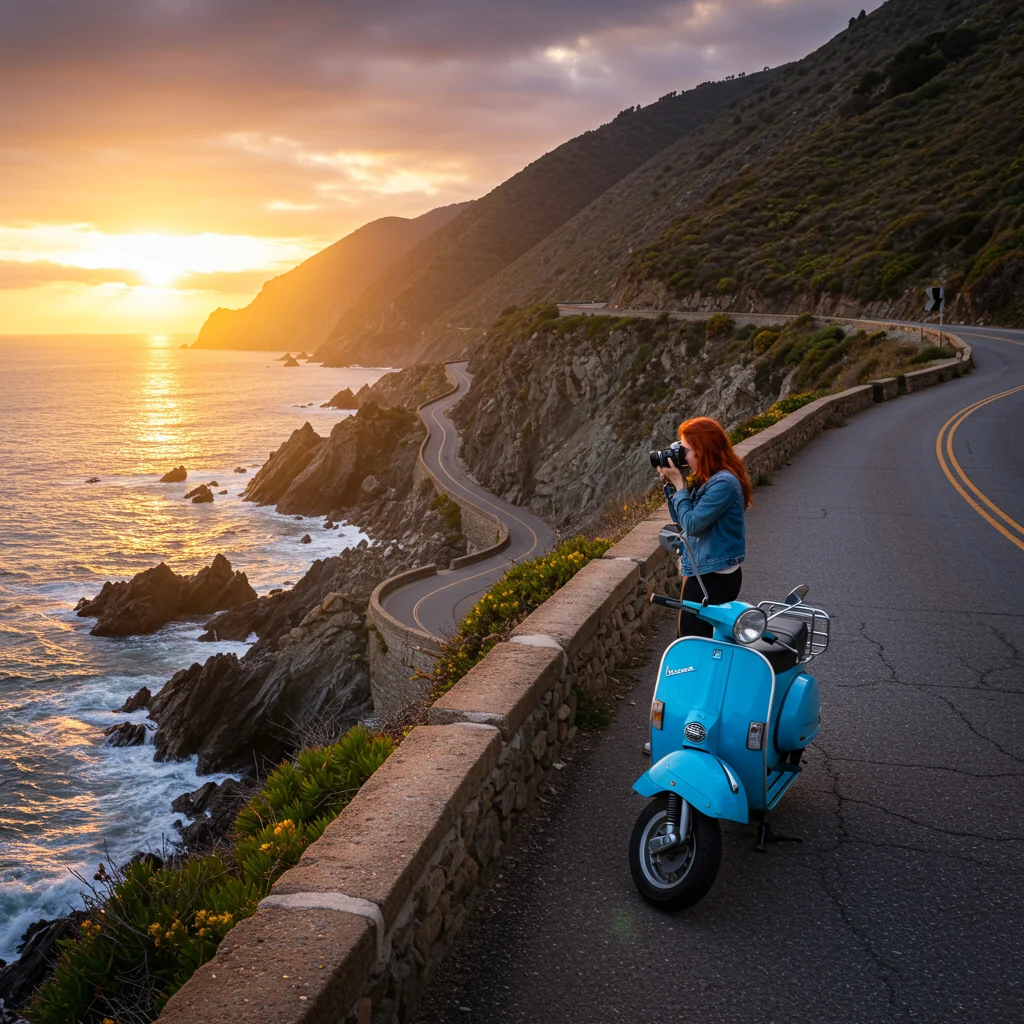
Where Are the Best Photo Spots in Chianti?
Top locations include hilltop viewpoints along the Chiantigiana, the main piazzas of Greve and Radda, and vineyard-lined roads at sunrise or sunset. Stone bridges, ancient churches, and cypress-lined drives add to the visual drama.
Ask your guide for local favorites—many know secret spots for panoramic shots or portraits with your Vespa framed by rolling hills.
What Are the Best Tips for Capturing Stunning Vespa Memories?
To make your photos stand out, try:
- Shooting during golden hour (early morning or late afternoon)
- Using leading lines (roads, rows of vines) to draw the eye
- Including people for scale and storytelling
- Experimenting with reflections in windows or puddles
- Taking candid shots of candid moments—laughter, shared meals, or spontaneous discoveries
Keep your camera or phone easily accessible, but always prioritize safety when riding.
How Can You Share Your Vespa Journey on Social Media?
Many travelers post highlights on Instagram, Facebook, or travel blogs. Use location tags and popular hashtags like #ChiantiByVespa to connect with fellow enthusiasts. Short videos or reels capture the dynamic motion and joyful spirit of the day.
Sharing stories and photos not only preserves your memories but also inspires others to experience Tuscany in this unique way.
What Does Sustainable and Responsible Tourism Look Like in Chianti?
Traveling responsibly ensures that we leave a positive impact on the places we visit. Chianti’s natural beauty and vibrant communities rely on respect and mindful engagement from visitors.
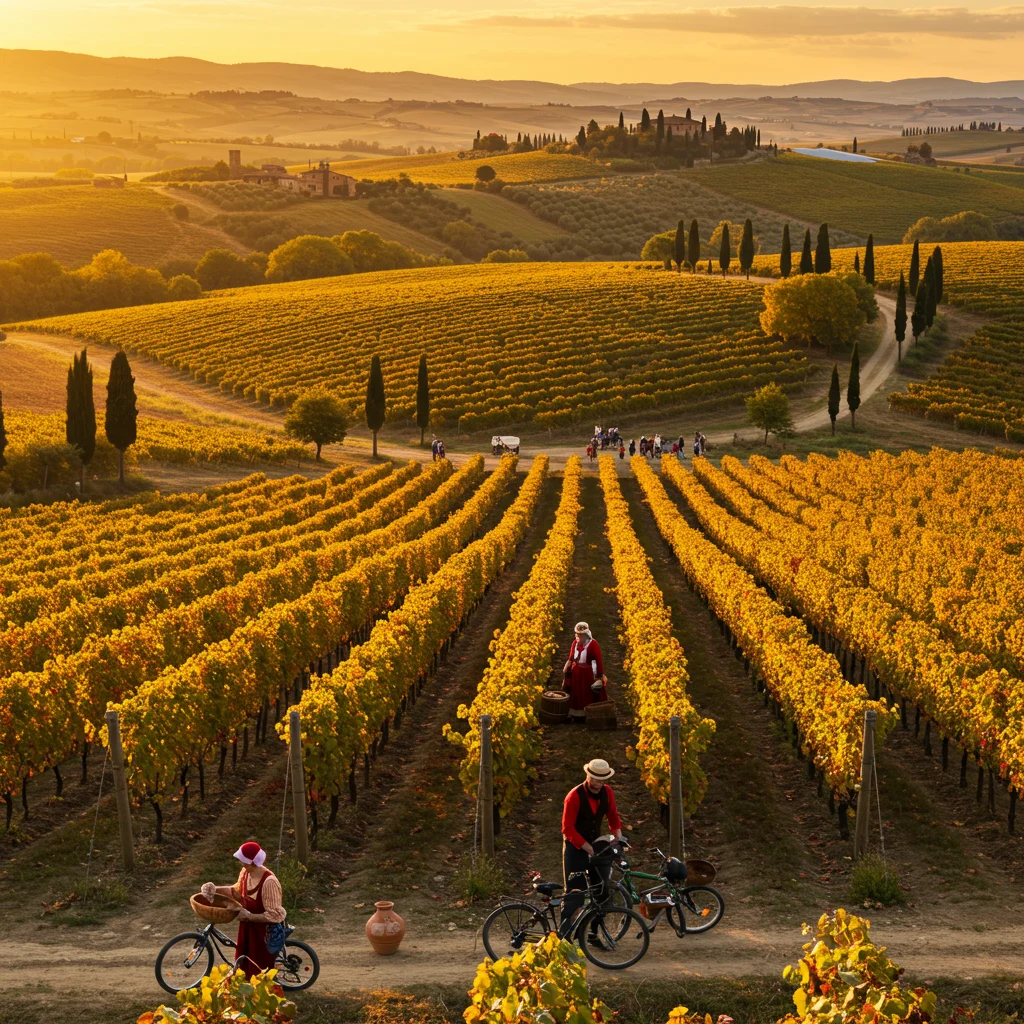
How Can You Respect Local Culture and the Environment?
We recommend:
- Sticking to marked roads and parking areas
- Minimizing noise and litter
- Supporting conservation efforts and heritage sites
- Learning about local customs before visiting villages
Simple gestures—such as greeting shopkeepers in Italian or participating in local recycling programs—reflect care for the community and the environment.
How Can You Support Small Businesses and Local Producers?
Choosing family-run restaurants, independent wineries, and artisanal shops helps sustain the region’s economy and traditions. Purchasing directly from producers preserves Chianti’s unique character and fosters meaningful connections.
Many Vespa tours collaborate with local partners, ensuring our spending benefits those who call Chianti home.
Is a Vespa Tour in Chianti Accessible to Everyone?
Vespa tours are designed to be inclusive, but certain requirements must be met for safety and enjoyment. Tour operators strive to accommodate a variety of needs and preferences.

What Are the Age, License, and Health Requirements?
Most operators require riders to be at least 18 years old with a valid driver’s license. International visitors may need an International Driving Permit. Good health and basic physical coordination are necessary for safe riding.
Always check specific requirements with your chosen tour provider before booking.
What Options Exist for Non-Riders and Families?
Many companies offer alternative transport, such as riding as a passenger with a guide or joining the tour in a support vehicle. Families with children can often arrange for child seats or alternative activities during the tour.
This flexibility allows everyone to enjoy the magic of Chianti, regardless of riding ability.
How Should You Budget for Your Chianti Vespa Experience?
Costs vary depending on the length of the tour, inclusions, and operator reputation. Planning ahead helps us avoid surprises and choose the experience that best matches our expectations.
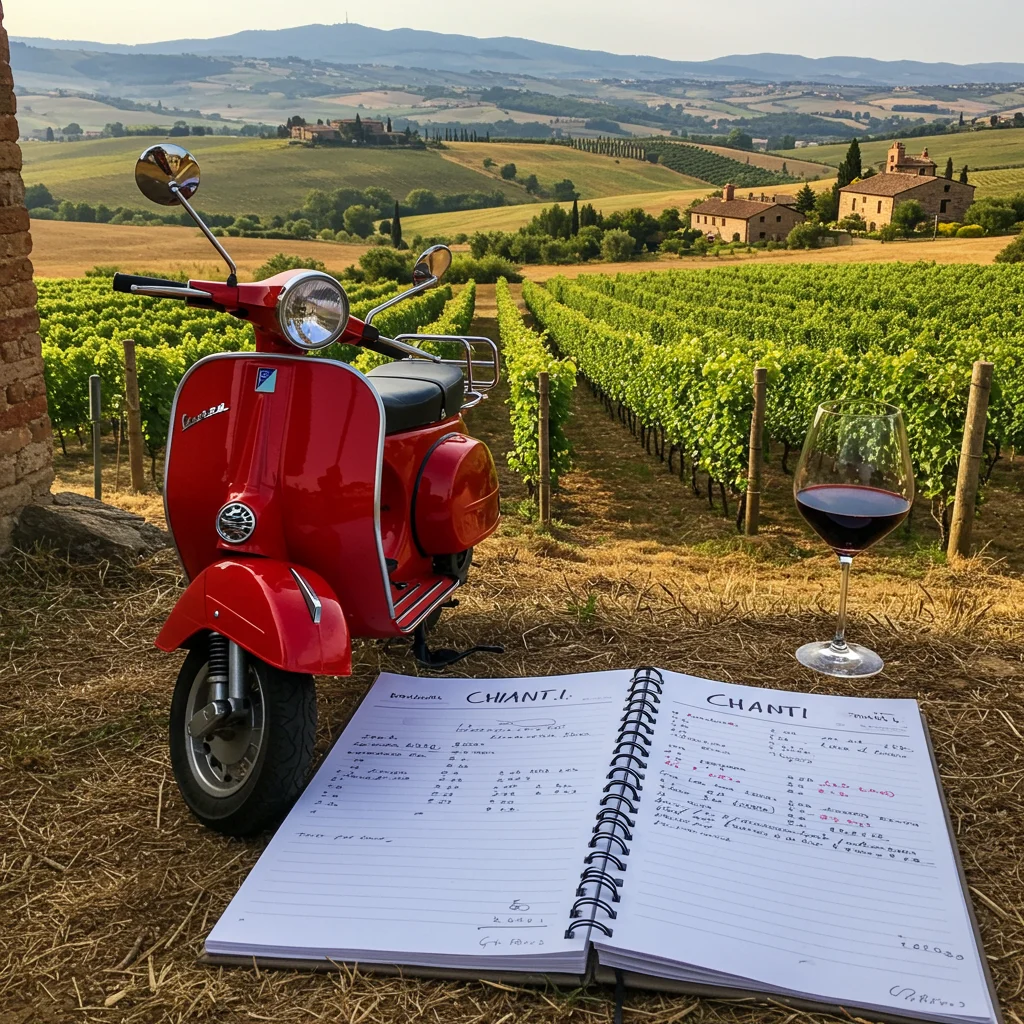
What Are the Typical Costs and Inclusions?
Day tours typically range from €120 to €200 per person, covering:
- Vespa rental
- Safety gear
- Guided services
- Lunch and wine tasting
- Insurance
Private tours, multi-day adventures, or luxury upgrades may cost more. Always verify what is included before confirming your booking.
How Can You Save Money on Your Vespa Tour?
Booking in advance, traveling during shoulder seasons, or joining small-group tours can help reduce costs. Some operators offer discounts for students or early reservations.
For those seeking alternative experiences, consider combining your Vespa tour with culinary or wine-focused adventures, as mentioned in our post on the Rome to Tuscany countryside tour.
What Should You Do If It Rains on Your Vespa Day?
Weather in Chianti can be unpredictable, especially in spring and autumn. Rain needn’t ruin your adventure—flexibility and a positive attitude go a long way.
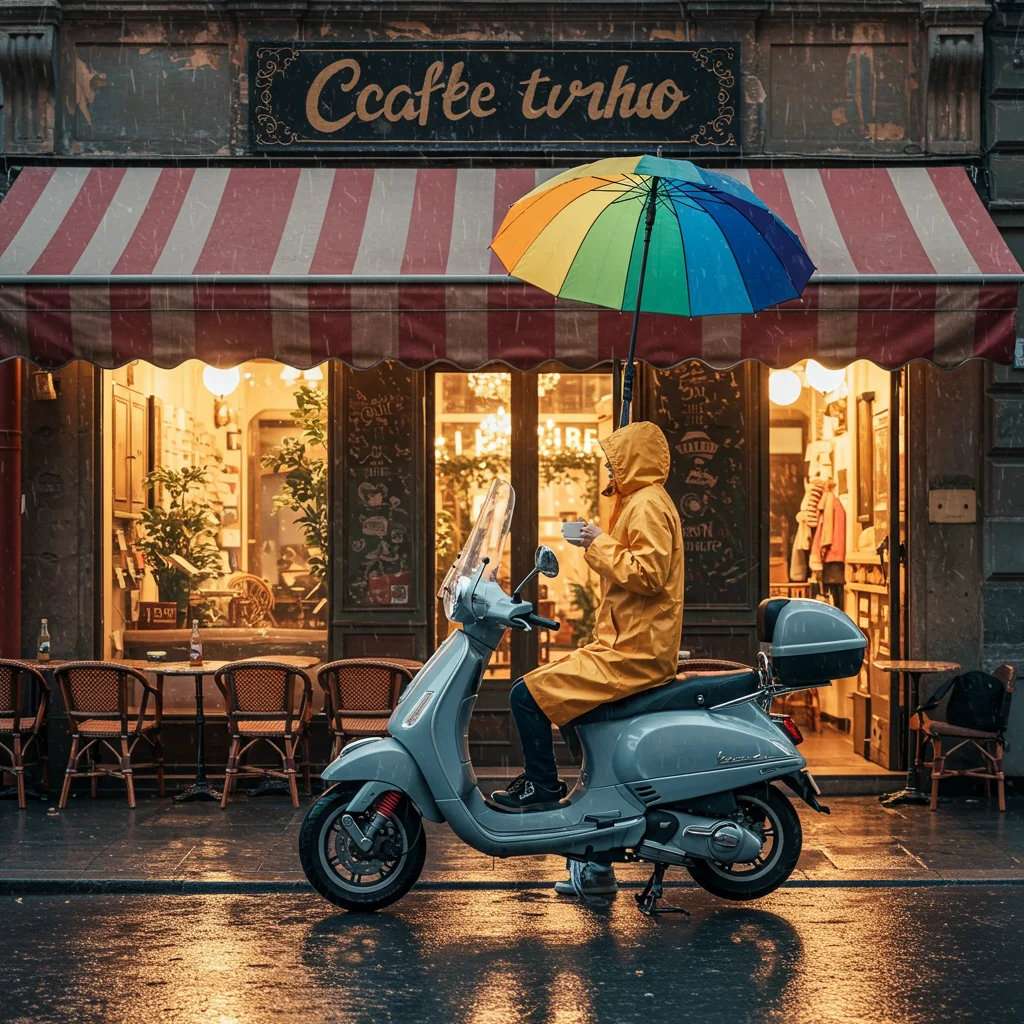
What Alternative Activities Are Available in Chianti?
If riding becomes unsafe due to heavy rain, many tour operators offer alternative activities such as cooking classes, wine tastings, or guided visits to museums and castles. Exploring local markets or indulging in a leisurely meal can turn a rainy day into a highlight.
Some tours provide rain gear or rescheduling options. Always check cancellation and refund policies when booking.
Frequently Asked Questions About Chianti Vespa Tours
We often receive questions from travelers considering a Vespa adventure in Chianti. Here are some of the most common queries:

Is Prior Vespa or Scooter Experience Required?
While prior experience is helpful, many operators welcome beginners and provide training. Confidence, a willingness to learn, and following safety instructions are key. Guided tours are especially suitable for first-time riders.
Can You Customize Your Vespa Tour?
Many companies offer customizable itineraries, private tours, or add-on experiences such as wine tastings, cooking classes, or photography sessions. Discuss your preferences with the operator when booking.
What Should You Wear for Comfort and Safety?
Dress in layers, choose comfortable, weather-appropriate clothing, and wear closed-toe shoes with good grip. Avoid loose scarves or accessories that could catch in the wind. Helmets are provided and must be worn at all times for safety.
What Do Real Travelers Say? Reviews and Testimonials
Feedback from past participants highlights the joy and sense of discovery that come with exploring Chianti by Vespa. Many describe their tour as the highlight of their Italian vacation, praising the guides, scenery, and culinary experiences.

What Are the Top Tips from Past Vespa Tour Participants?
Common advice includes:
- Arrive well-rested and ready for adventure
- Don’t rush—take time to savor each stop
- Ask questions and engage with your guide
- Bring a portable charger for your phone or camera
- Be open to spontaneous detours and surprises
Travelers consistently recommend this experience for anyone seeking an authentic connection with Tuscany.
How to Book on Viator
Booking your Chianti Vespa adventure is simple and secure through Viator, a trusted platform for global travel experiences. On Viator’s website, you can browse available tours, compare prices, read traveler reviews, and confirm your reservation with ease.

To find tours and book activities in Chianti, visit their dedicated page. Be sure to review all inclusions, exclusions, and cancellation policies before completing your booking. Viator’s customer service provides support in case of questions or changes to your plans.
How Can You Book Your Chianti Vespa Adventure Today?
Ready to feel the thrill of Tuscany’s rolling hills beneath your wheels? Booking in advance is recommended, especially during peak seasons and festival periods. Choose your preferred operator, confirm your eligibility, and select the itinerary that excites you most.

Remember, platforms like Viator simplify the process, offering secure payments and verified experiences. Once booked, all that remains is to anticipate the adventure ahead.
Final Thoughts: Why Vespa Is the Best Way to See Chianti
Touring Chianti by Vespa is more than a mode of transport—it’s a gateway to the heart of Tuscany. The freedom, intimacy, and sensory delight of riding through sunlit vineyards and ancient villages create memories that last a lifetime. Whether you’re a seasoned traveler or a first-time visitor, this experience offers a fresh perspective on one of Italy’s most beloved regions.
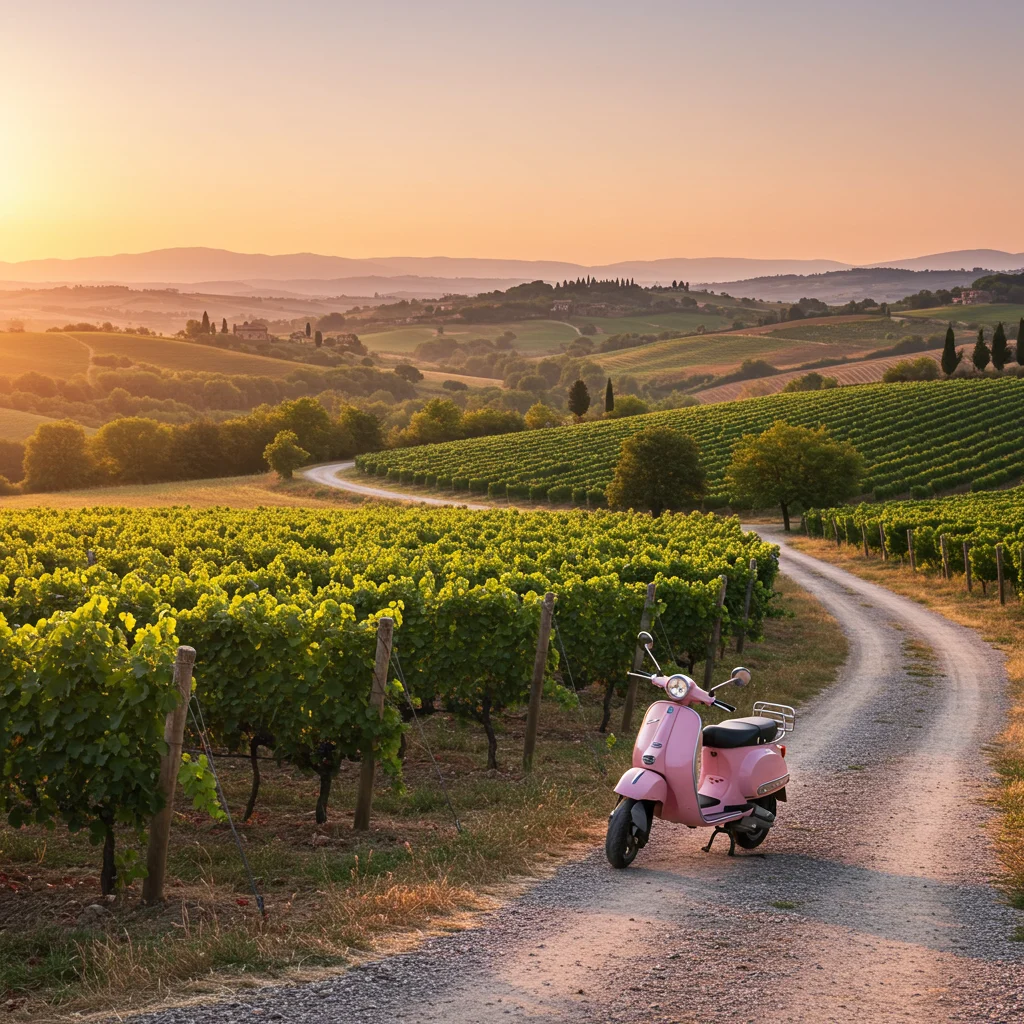
At Izase, we celebrate journeys that inspire and connect. For more travel inspiration and tips, visit Izase and start planning your next adventure today.
Disclaimer: This information is accurate to the best of our knowledge; however, there may be changes or mistakes. Please verify exact details on the Viator booking page.


